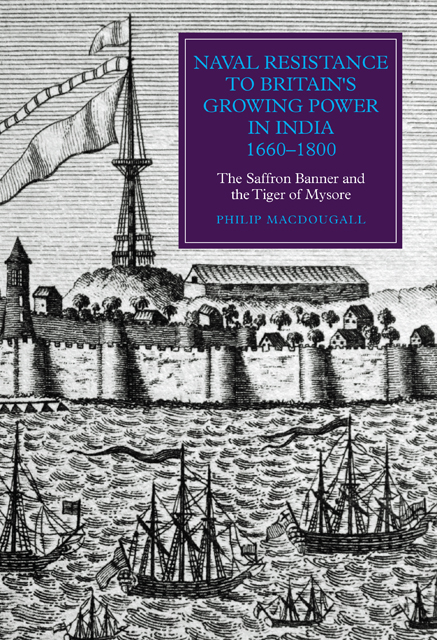 Naval Resistance to Britain's Growing Power in India, 1660–1800
Naval Resistance to Britain's Growing Power in India, 1660–1800 Book contents
- Frontmatter
- Contents
- List of Illustrations
- Abbreviations
- Chronology
- Maps
- Preface
- Part I Early Naval Resistance: The Historical Background
- Part II The Saffron Banner: Irregular Naval Warfare against an Emergent Britain
- Part III The Tiger of Mysore: A Conventional Navy to Oppose British Dominance
- Conclusion
- Bibliography
- Index
- Worlds of The East India Company
2 - Surat: Home of the Gujarat Sea Trade
Published online by Cambridge University Press: 23 February 2023
- Frontmatter
- Contents
- List of Illustrations
- Abbreviations
- Chronology
- Maps
- Preface
- Part I Early Naval Resistance: The Historical Background
- Part II The Saffron Banner: Irregular Naval Warfare against an Emergent Britain
- Part III The Tiger of Mysore: A Conventional Navy to Oppose British Dominance
- Conclusion
- Bibliography
- Index
- Worlds of The East India Company
Summary
The City is situated by the side of a pleasant river, which falls into the Indian Sea over a bar. This river is navigable for ships of large burthen, where they have the benefit of building and repairing ships with the same convenience as we have in England. The Moors build very complete ships; which the princes of Arabia frequently purchase.
Clement Downing (1737)
For the Mughals, Surat was the port where they developed a navy of not inconsiderable importance, with vessels built here that would eventually come to adopt many European technical developments. On a few occasions only were these to be directly employed against either the Portuguese or any other European naval force. Instead, they were used to defend the empire against internal indigenous opposition. As for both the Dutch and English, the two European nations that the Mughals identified as potential allies in their attempt to undermine the Portuguese, Surat was to provide them with important shore-based facilities that included not just trade factories but a defended port that permitted them to maintain and repair ships. In addition, and usefully allowing the Mughals to gain an insight into methods of European ship construction, there were facilities at Surat used for the building of ships for the European trading nations.
Surat first emerged as a major port city during the late fifteenth century when it began to contribute significantly to the wealth of the Sultanate of Gujarat. It lies on the Tapi River some fourteen miles before it drains into the Gulf of Cambay. In 1572 Surat was brought into the rapidly expanding Mughal Empire, captured by Jalāl ud-Dīn Muḥammad Akbar, otherwise known as Akbar the Great, who, as the third Mughal Emperor, ruled from
- Type
- Chapter
- Information
- Naval Resistance to Britain's Growing Power in India, 1660–1800The Saffron Banner and the Tiger of Mysore, pp. 20 - 38Publisher: Boydell & BrewerPrint publication year: 2014


